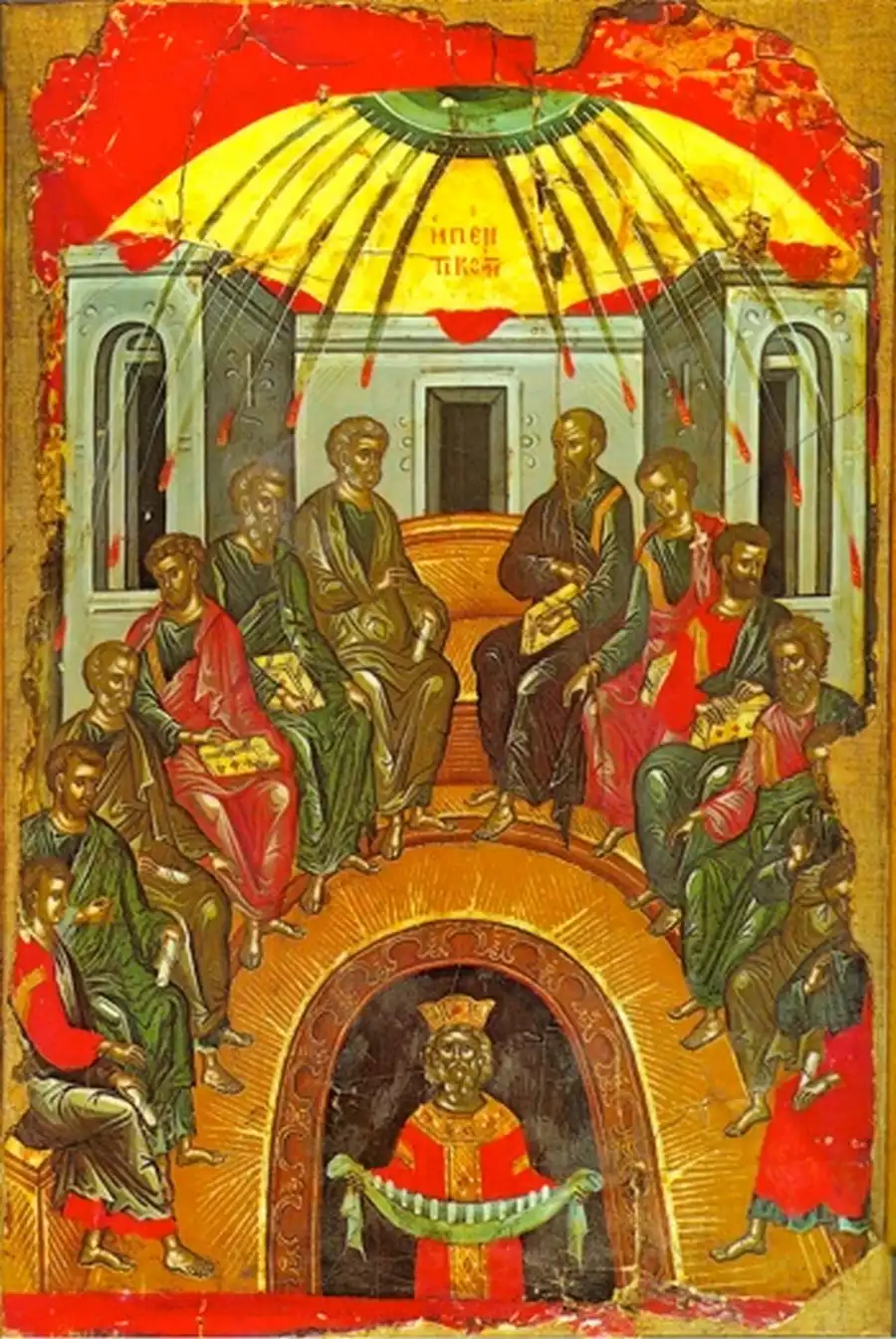
Historical and Etymological Genesis of Apostolic Succession
Apostolic succession, a term deeply rooted in Christian ecclesiology, refers to the continuous transmission of spiritual authority through the bishops, dating back to the apostles of Jesus Christ. This concept, pivotal in maintaining doctrinal purity and organizational unity in various Christian denominations, finds its origins in the early Christian communities. It is esteemed as a critical element in preserving the authenticity of ecclesiastical teachings and practices, ensuring that they remain faithful to the original apostolic tradition. This unbroken lineage of episcopal consecration is seen as a testament to the Church’s fidelity to its founding principles, sustaining its historical and theological continuity over centuries.
The etymology of ‘apostolic’ traces back to the Greek word ‘apostolos’, meaning ‘one who is sent away’, a reference to the twelve apostles sent forth by Jesus Christ. ‘Succession’ derives from the Latin ‘successio’, implying a sequence or continuation. Together, the phrase ‘Apostolic succession’ encapsulates the unbroken lineage of church leadership and authority, directly linked to Christ’s apostles.
Historically, the roots of apostolic succession can be traced to the early Christian Church’s efforts to preserve the teachings and authority of the apostles. The New Testament, particularly the Acts of the Apostles and the Pauline Epistles, provides implicit evidence of this practice. For instance, in Acts 1:20-26, the apostles appoint Matthias as a successor to Judas, indicating an early form of succession. Moreover, Paul’s letters to Timothy and Titus (1 Timothy 5:22, 2 Timothy 2:2, and Titus 1:5) emphasize the importance of careful appointment of church leaders, further underscoring this principle.
Apostolic Succession in the Patristic Era
The Patristic Era, a crucial period for the development of early Christian theology and practice, saw significant elaboration and application of the concept of apostolic succession. This era, spanning from the late 1st to the 8th century, witnessed the consolidation of ecclesiastical structures and doctrinal formulations, with apostolic succession playing a central role.
Church Fathers, such as Ignatius of Antioch and Irenaeus of Lyons, fervently advocated for apostolic succession as a means of safeguarding the church’s teachings against heresies. Ignatius, in his epistles, underscores the importance of adhering to the bishop, who he saw as a successor to the apostles. Irenaeus, in his seminal work ‘Against Heresies’, articulates a direct line of episcopal succession from the apostles, specifically highlighting the role of the Bishop of Rome.
The development of the episcopal structure in the Patristic Era further reinforced apostolic succession. Bishops, perceived as successors to the apostles, were entrusted with the authority to teach, sanctify, and govern. This period saw the establishment of key sees, such as Rome, Constantinople, Alexandria, Antioch, and Jerusalem, which were believed to have been founded by apostles, thereby lending additional legitimacy to the concept of apostolic succession.
This analysis elucidates the foundational role of apostolic succession in the historical development of Christian ecclesiology. Its significance lies not only in its role as a guarantor of doctrinal continuity but also as a symbol of the unbroken spiritual and authoritative link to the very origins of the Christian faith.
Apostolic Succession Beyond the Patristic Era
Apostolic succession’s significance continued to evolve beyond the Patristic Era, adapting to the changing contexts of the medieval and modern church. During the Middle Ages, the concept became integral to ecclesiastical governance, especially within the Roman Catholic Church. It was used to assert the legitimacy of ecclesiastical authority and to counter challenges from secular powers and schismatic movements.
The Reformation period marked a pivotal moment for apostolic succession. Protestant reformers, while acknowledging the historical importance of apostolic succession, often questioned its necessity for church authority or salvation. In contrast, the Roman Catholic and Eastern Orthodox churches maintained it as essential for maintaining doctrinal integrity and sacramental validity.
In contemporary times, apostolic succession remains a defining feature of several Christian denominations. The Anglican Communion, for instance, views apostolic succession as a sign of continuity with the Church’s historic and apostolic roots. The Eastern Orthodox Church continues to see it as vital to the preservation of the true faith and practices handed down from the apostles.
Apostolic succession, from its inception in the early Christian community to its current role in various denominations, represents a vital link to the apostolic foundation of the Christian faith. Its enduring presence underscores its importance in maintaining doctrinal consistency, ecclesiastical authority, and the unbroken continuity of the Christian Church.
References
- Gonzalez, Justo L. “The Story of Christianity: Volume 1: The Early Church to the Dawn of the Reformation.” HarperOne, 2010.
- Kelly, J.N.D. “Early Christian Doctrines.” HarperCollins Publishers, 1978.
- McGrath, Alister E. “Christianity’s Dangerous Idea: The Protestant Revolution – A History from the Sixteenth Century to the Twenty-First.” HarperOne, 2007.
- Pelikan, Jaroslav. The Christian Tradition: A History of the Development of Doctrine.” University of Chicago Press, 1975.
- Study.com. “Apostolic Succession: Overview & Concept.” Accessed January 2, 2024.
- Αποστολική Διακονία (Apostoliki Diakonia). “Αποστολική Διαδοχή” (Apostolic Succession). Accessed January 2, 2024.
- Ware, Timothy. “The Orthodox Church.” Penguin Books, 1993.
